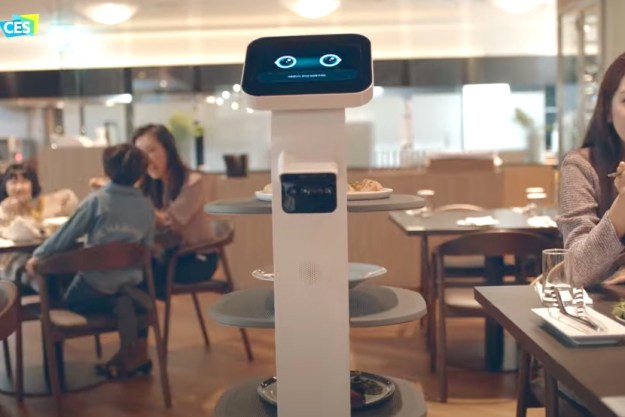Over the past few years, robot exosuit technology that’s capable of augmenting human movement with high-tech components has gone from a sci-fi dream to tech reality. Many of these wearable robots focus on augmenting the strength of their users for applications like lifting heavy objects in factories. However, an upper body robot exosuit developed by researchers at Austin, Texas-based Harmonic Bionics takes a different tack.
Designed to be used for both arms in a seated position, Harmony SHR is a rehab robot exosuit intended to be utilized as part of physical therapy for stroke patients or those with some other injury that limits mobility. It features two articulated arms that support the weight of the user’s arms, and move them through preprogrammed exercises that can be customized for each user. It can also function in a mode in which the robot assists just one arm, which follows the patient-driven movement of the opposite arm.
“Harmony SHR is an upper-extremity, robotic rehabilitation system that works with a patient’s scapulohumeral rhythm (SHR) to enable natural, comprehensive therapy for both arms,” reads a description of the wearable therapy robot. “When combined with Harmony SHR’s Weight Support mode, this unique shoulder design may allow for earlier initiation of post-stroke therapy. Harmony SHR’s Preprogrammed Exercises promotes functional treatment through patient-specific movements that can enable an increased number of repetitions per session without placing a larger physical burden on therapists or their resources. As the only rehabilitation exoskeleton with Bilateral Sync Therapy, Harmony SHR enables intent-based therapy by registering healthy arm movements and synchronizing that motion onto the stroke-affected side to help reestablish neural pathways.”
The upper body robot exosuit essentially carries out the same job as a physical therapist, helping patients to build up strength and confidence by getting them to complete repetitions of certain movements. But unlike a human physical therapist, Harmony SHR could theoretically carry out unlimited repetitions (within reason) without tiring. It is also possible that patients might be able to access the robot in clinical settings where this is not necessarily a physical therapist available.
This is just one more example of how robots are being used in healthcare and rehabilitation, whether it’s wearable robots for helping people to walk or help restore movement through training, medical interventions carried out with the aid of surgical robots, or even emotional-support robots. No, robots aren’t going to be replacing health care professionals in any of these capacities. But they’re increasingly going to be lending a hand. Or, in this case, maybe even two of them.
Editors' Recommendations
- SWAT team’s Spot robot shot multiple times during standoff
- Boston Dynamics uses ChatGPT to create a robot tour guide
- Security robots could be coming to a school near you
- Boston Dynamics’ festive robot video has a surprise ending
- CyberOne robot is Xiaomi’s answer to Tesla Bot


